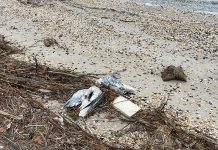
OCEAN COUNTY – With the passage of a referendum, the county will now be able to use open space funds to acquire and maintain property for more than just open space.
The question on the ballot asked people if they wanted open space tax funds to be used for the acquisition and maintenance of property for historic or recreational purposes. There were 55,851 people who agreed with this, and 44,883 who disagreed.
For the most part, there will be no change, said Freeholder Director Virginia Haines, who serves as liaison to the county’s Natural Lands program.
“First and foremost, we are still going to preserve open space. That is still going to be our main priority,” she said. Historical or recreational projects would be secondary.
The main example she used is the Cox House, near the intersection of Route 9 and West Bay Avenue in Barnegat. This building has some history to it. The family was extremely influential in the area, having been involved in numerous industries, including shipbuilding, installing a water system, and starting the Times-Beacon newspapers. The Cox house was the first house in Barnegat to have electricity and running water. As with many old buildings, the cost to maintain and repair it is great. Not only due to the elements and the passage of time, but also because earlier this summer, it was struck by a car. Barnegat Township owned the property for some time, before giving it to the county within the last few years.
The county wants this property to be the anchor for the Barnegat Branch Trail, a biking and walking trail that will wind through several towns.
In order to fix this property up, for example, the county would first rather receive grants, she said. If the county is not successful in receiving grants, they’d rather use these open space funds before money is taken from other accounts.
The Natural Lands Trust program is dedicated to protecting open space in Ocean County. The fund was approved by Ocean County voters in 1997, and established a 1.2-cent tax to fund land acquisitions. The program generates about $8 million per year.
Currently, a little more than half of the county is preserved through some combination of this program, and state and federal programs, officials have said.
The way it works is a property owner would offer the land up for sale to the county as open space. The county has an appraiser determine its value and a sale is made. The county also waits for approval from a town. This is because any sale takes that property off the tax rolls of the town.
The taxation will remain the same – 1.2 cents per $100 of assessed valuation. In other words, if your property is assessed at $100,000, you would be paying $12 a year.
County officials have previously said that some municipalities that have their own open space programs already operate this way.
Theoretically, this could mean that the county could buy historic buildings. However, Haines said that they are not going out of their way to look for purchases.






